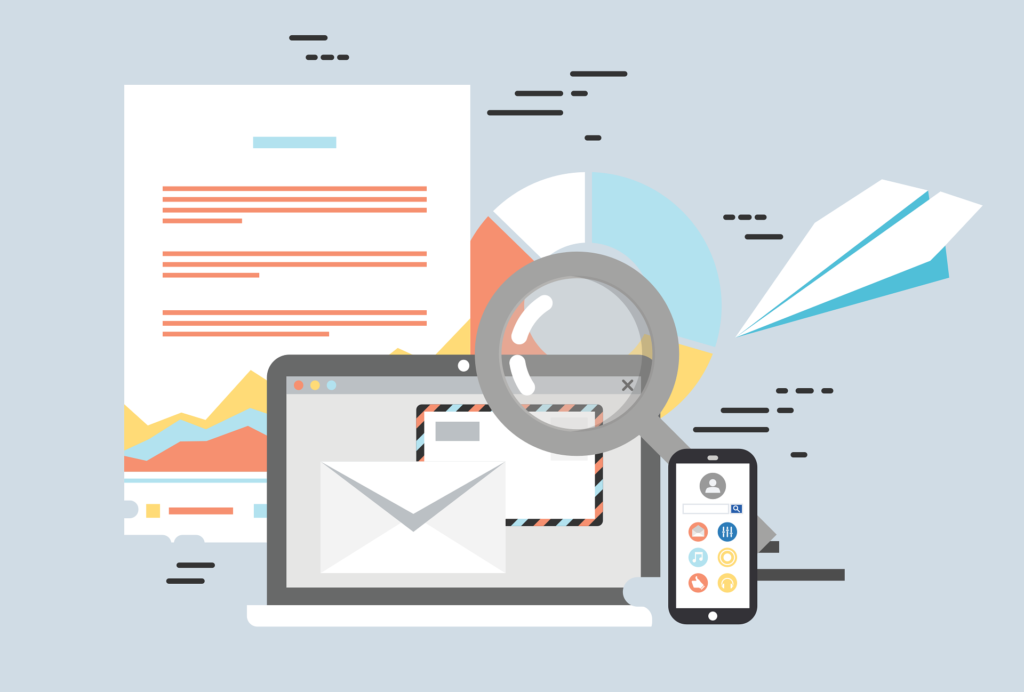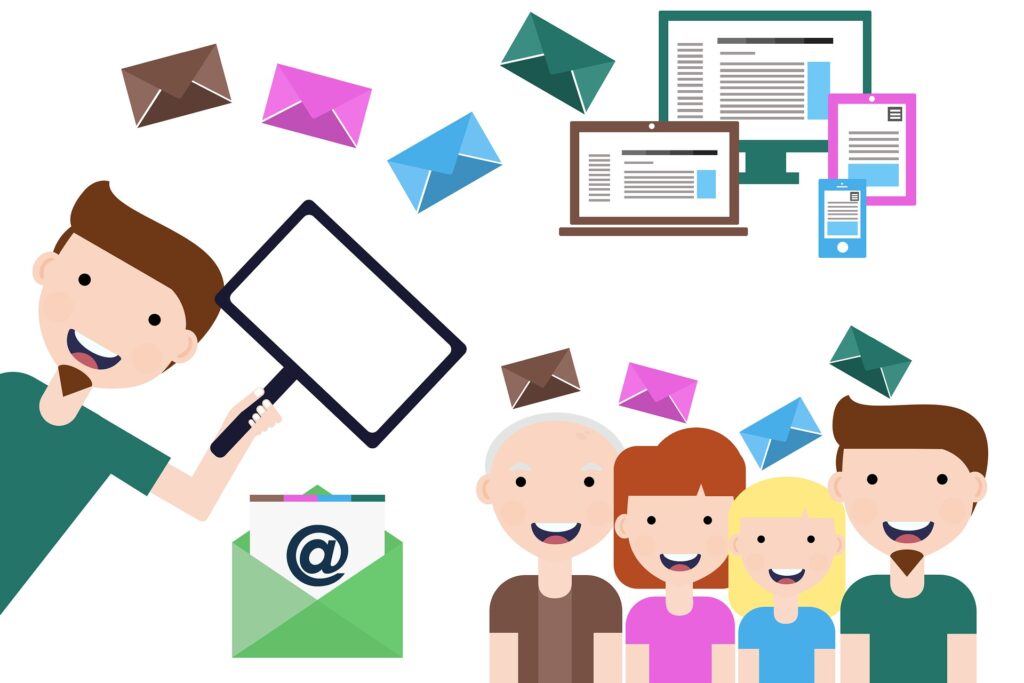Exceptional Returns and Loyal Customers Await
Welcome to a world where marketing platforms are constantly evolving. One approach remains a steadfast driver of success: email marketing. In this article, we leverage email deliverability tools and email tracking tools to explore the many benefits of email automation as well as best practices for creating dynamic email content. We will unpack why email is the smartest investment for your business success and provide expert insights and strategies to help you get the most out of this versatile channel, from elevated engagement to bigger profits. Get ready to master email marketing.
Table of Contents
Why Invest in Email Marketing?
Email marketing provides a direct line of communication with your audience. With billions of people using email daily, it offers an opportunity to reach your customers where they are most engaged—right in their inboxes. Here are some compelling reasons to invest in email marketing:
- High ROI: Email marketing consistently delivers one of the highest returns on investment compared to other marketing channels. It’s a cost-effective way to engage with your audience and drive conversions.
- Targeted Reach: With email marketing, you can segment your audience and send personalized messages based on their preferences, demographics, or buying behavior. This targeted approach leads to higher engagement and conversion rates.
- Increased Customer Lifetime Value: By nurturing relationships through email, you can build trust and loyalty with your customers. Repeat business and referrals from satisfied customers contribute to long-term success.
- Measurable Results: Email marketing platforms provide robust analytics and reporting features, allowing you to track key metrics such as open rates, click-through rates, and conversions. This data helps optimize future campaigns and improve overall performance.

Email Marketing Best Practices
Implementing email marketing best practices ensures that your campaigns deliver maximum impact. Here are some essential best practices to follow:
1. Build a Quality Email List
Your email list is the foundation of your email marketing success. Focus on building a quality list of engaged subscribers who have given explicit permission to receive your emails. Offer valuable content or incentives to encourage sign-ups.
2. Use a Responsive Email Design
Optimize your emails for different devices. A responsive email design ensures that your messages display correctly on desktops, smartphones, and tablets. This improves the user experience and increases engagement.
3. Craft Compelling Subject Lines
Your subject line is the first thing recipients see in their inbox. Create catchy, attention-grabbing subject lines that entice subscribers to open your emails. Personalization and urgency are effective strategies to increase open rates.
4. Segment Your Audience
Segmenting your email list and audience allows you to send highly targeted messages to specific groups. Customize your content based on demographics, interests, purchase history, or any other relevant criteria. Strategic email list segmentation increases message relevancy and drives higher engagement and clickthrough rates. Define your audience segments clearly, group your contacts appropriately, and tailor content for maximum impact.
5. Personalize Email Content
Personalization goes beyond addressing subscribers by their first names. Tailor your emails to individual preferences and behaviors. Use dynamic content and automation to deliver personalized recommendations, product suggestions, or exclusive offers.
Email Marketing Tips
Here are some tips to enhance your email marketing effectiveness:
1. Test Your Emails
Experiment with different email elements such as subject lines, visuals, calls-to-action, and send times. A/B testing allows you to optimize your campaigns based on data-driven insights.
2. Focus on Mobile Optimization
With the majority of emails being opened on mobile devices, it’s crucial to optimize your emails for mobile. Use mobile-friendly templates, concise copy, and clear “calls to action” to improve the mobile user experience.
3. Use Engaging Visuals
Incorporate eye-catching visuals, such as images and videos, into your emails. Visual content helps grab attention, communicate your message effectively, and drive engagement.
4. Create Clear and Compelling Calls-to-Action (CTAs)
Your CTAs should be clear, concise, and compelling. Use action-oriented language and place your CTAs prominently within your emails. Make it easy for subscribers to take the desired action.
5. Optimize for Deliverability
Utilize email deliverability tools to optimize your campaigns for inbox placement. Implement proper authentication protocols like SPF, DKIM, and DMARC to verify your domain. Keep your email list clean and current by detecting bad email addresses and inactive subscribers with email list hygiene tools. Avoid spam triggers by writing clear, accurate subject lines and content while segmenting for relevancy. With email deliverability tools and best practices, your emails can successfully reach target inboxes.
Email Marketing Success Strategies
Employing effective strategies can maximize the success of your email marketing campaigns:
1. Welcome Series
Create a series of automated welcome emails to introduce new subscribers to your brand, provide useful information, and establish a connection. Use this opportunity to set expectations and encourage further engagement.
2. Cart Abandonment Recovery
Recover lost sales by sending automated emails to customers who abandon their shopping carts. Include persuasive copy, personalized product recommendations, and limited-time offers to entice them back and complete the purchase.
3. Drip Campaigns
Utilize drip campaigns to nurture your leads and guide them through the customer journey. Set up a series of automated emails that deliver relevant content based on specific triggers or time intervals.
4. Re-Engagement Campaigns
Win back inactive subscribers with re-engagement campaigns. Offer exclusive promotions, content upgrades, or surveys to rekindle their interest and encourage them to become active again.
Creating Catchy Email Subject Lines
To capture the attention of your audience, your email subject lines must stand out. Here are some tips for creating catchy subject lines:
- Use Personalization: Include the recipient’s name or other personalized details in the subject line.
- Create Urgency: Convey a sense of urgency to prompt recipients to open your email promptly.
- Pose a Question: Engage your audience by asking a thought-provoking question in the subject line.
- Offer a Benefit: Highlight a clear benefit or value proposition to entice recipients to open your email.
- Keep it Short and Sweet: Keep your subject lines concise and attention-grabbing to avoid getting cut off in email previews.
Email Content Personalization
Personalizing your email content enhances customer engagement and boosts conversions. Here are some effective ways to personalize your email content:
- Segmentation: Divide your audience into smaller, targeted segments to deliver more relevant content.
- Dynamic Email Content: Use dynamic email content to automatically personalize your emails based on individual preferences, behavior, or purchase history.
- Automated Triggers: Send personalized emails triggered by specific actions or events, such as abandoned carts, birthdays, or anniversaries.
- Recommendations: Provide personalized product recommendations based on customers’ browsing or purchase history.
- Personalized Offers: Tailor your offers and discounts to match each recipient’s preferences and buying behavior.
Conclusion
Email marketing is a powerful tool that allows businesses to connect directly with their audience and drive results. By investing in email marketing and following best practices, you can maximize engagement, conversions, and long-term success. Take advantage of personalization, catchy subject lines, and email list segmentation to deliver targeted and impactful messages. Start leveraging the power of email marketing today to grow your business and nurture relationships with your customers.
Frequently Asked Questions
1. How often should I send marketing emails?
There is no one-size-fits-all answer to this question. The frequency of your email campaigns depends on your industry, target audience, and content relevance. Test different sending frequencies to find the optimal balance that keeps your audience engaged without overwhelming them.
2. What is a good open rate for email marketing?
A good open rate for email marketing typically falls between 15% and 25%, depending on the industry. However, it’s important to benchmark against your own past performance and establish goals for improvement.
3. How can I improve my email click-through rate?
To improve your email click-through rate, focus on creating compelling subject lines, clear calls-to-action, and personalized content. Test different elements of your emails and analyze the data to identify strategies that resonate with your audience.
4. Can I automate my email marketing campaigns?
Absolutely! Automating your email marketing campaigns saves time and enhances efficiency. Use automation to welcome new subscribers, nurture leads, recover abandoned carts, and engage inactive subscribers.
5. How can I measure the success of my email marketing campaigns?
Measure the success of your email marketing campaigns by analyzing key metrics such as open rates, click-through rates, conversion rates, and revenue generated. Use email marketing platforms with built-in analytics to track these metrics and gain insights for optimization.
6. Can personalization enhance email marketing results?
Yes, personalization can significantly enhance email marketing results. By segmenting your audience and delivering personalized content, you can increase engagement, conversions, and customer satisfaction.
7. What are some examples of effective email subject lines?
Examples of effective email subject lines include “Exclusive Offer Inside: Don’t Miss Out!”, “Your Free Gift Awaits – Open Now!”, and “Limited-Time Sale: Up to 50% Off Today!”. Remember to personalize, create urgency, and offer clear benefits in your subject lines.






